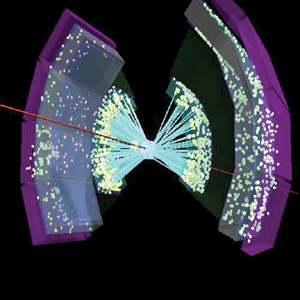
The 4 km circumference Relativistic Heavy Ion Collider (RHIC) at the Brookhaven Laboratory is now running at its full design nucleon collision energy of 200 GeV and physics expectations are high.
The machine began running for physics last year at a modest energy but soon ramped up to a nucleon collision energy of 130 GeV.
In addition to running with heavy ions at full energy, the latest RHIC run will explore collisions of spin-oriented (polarized) protons.
Earlier this year the first physics results from the RHIC 2000 run were announced. These results showed that nucleus-nucleus collisions have attained a region where the distributions of the numbers of produced particles display new behaviour.
The objective is to produce a “Little Bang”, recreating the quark-gluon plasma – the primeval soup that existed from about 1 µm after the Big Bang of creation, and then survived for about a ten-thousandth of a second until quarks had a chance to cool down sufficiently to group together and form the nuclei that we now know.
The new RHIC run will also push for high luminosity, which is a measure of the nuclear collision rate.







